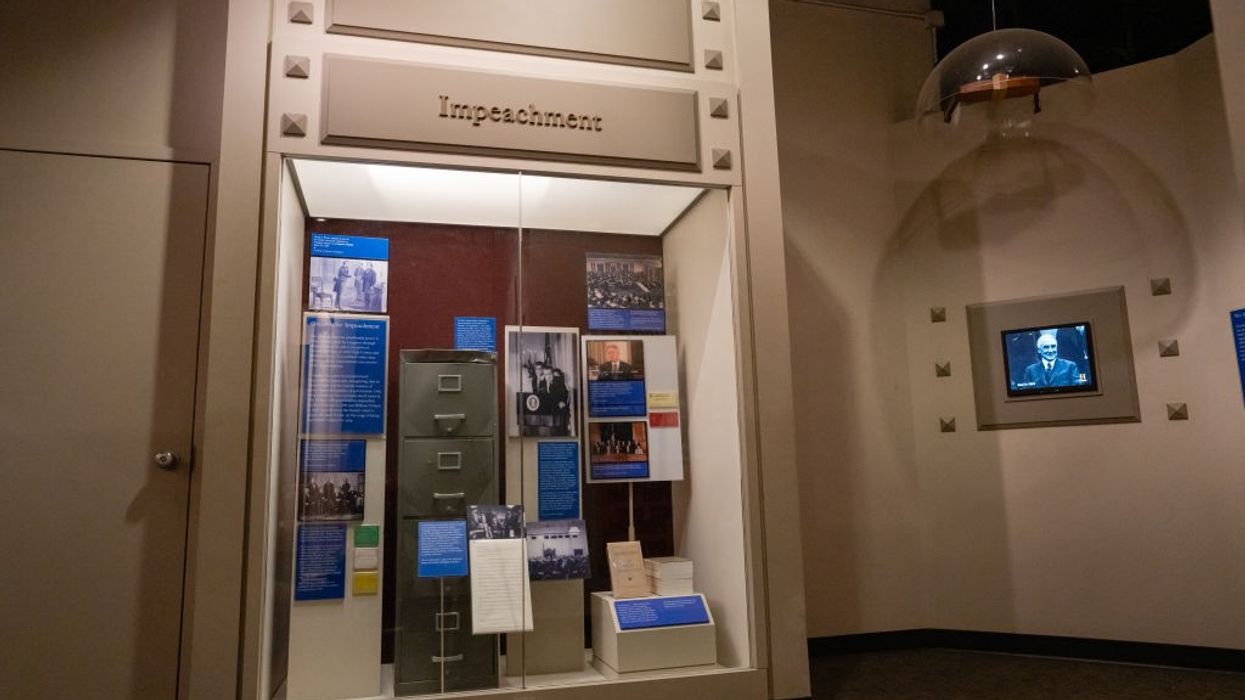What Does Terrorism Actually Mean? Maybe Orwell Can Help
International activists kidnapped and brought to Israel by force, people simply being alive in a place an Israeli minister doesn’t want them to be, anyone near a place Israel has decided might be a Hamas tunnel—how are all these people terrorists?
When activists from the Global Sumud Flotilla were being held in Ktziot prison, Israeli Minister of National Security Itamar Ben Gvir staged a photo op taunting them and saying, “I was proud that we are treating the ‘flotilla activists’ as terror supporters, whoever supports terrorism is a terrorist and deserves the conditions ofterrorists”…the conditions in Ktziot prison.
This requires a little unpacking. First, Ben Gvir’s claim that the Global Sumud Flotilla (GSF), and the Conscience and Thousand Madleens flotilla that followed a week later, support terrorism requires a bit of jiujitsu. When Israel drops 2,000-pound dumb bombs on hospitals and defenseless people, they always insist they are actually targeting the hidden Hamas fighters in tunnels beneath the visible injury and death of people on the surface. They make a distinction between the terrorist below ground and the “collateral damage” above. But when anyone tries to bring aid to the victims, Israel erases their own distinction between hidden fighters and visible victims and claim that the aid is for terrorists. They claim that the activists are supporting terrorists, and that the flotillas are “Hamas Flotillas.”
Next, Ben Gvir does a bit of leapfrog, claiming that the activists he just defined as terror supporters are themselves terrorists. And, as terrorists, they deserve to be held in a terrorist prison like Ktziot, because, apparently, all prisoners of Israel are terrorists.
Similar language was used by Defense Minister Israel Katz, saying that anyone still in Gaza City, for any reason at all, after the Israelis ordered them to move out were “terrorists or terror supporters.”
Political violence is a serious subject, and we need to be able to think about it and discuss it in a serious way. The word terrorism is too important to that discussion for such sloppy usage and deliberate misuse by politicians.
International activists kidnapped and brought to Israel by force, people simply being alive in a place Katz doesn’t want them to be, anyone near a place Israel has decided might be a Hamas tunnel—how are all these people terrorists? What actions have they taken to earn the accusation? Ben Gvir and Katz don’t say.
This is, at best, broad and imprecise language.
In his essay “Politics and the English Language,” George Orwell warned against this. He said that our language is, “ugly and inaccurate because our thoughts are foolish, but the slovenliness of our language makes it easier for us to have foolish thoughts.”
Orwell also said that our words are often “meaningless, in the sense that they do not point to any discoverable object.” For a word to have meaning it has to refer to some thing: an object, an idea—something. Even the “yada, yada, yada” in the Seinfeld episode referred to the act of glossing over possibly important information.
How can the word terrorist used in this wildly imprecise way have any useful meaning? How can it lead to anything but imprecise and foolish thoughts? Can we actually think and talk about the important question of political violence with such a vague word? I don’t think so.
Fortunately, Orwell also said that sloppy thinking and use of meaningless words can be reversed, “if one is willing to take the necessary trouble.”
So, let’s take the trouble.
There is no universally accepted definition of terrorism, perhaps because governments, the main source of agreement on questions like this, don’t want a definition that covers their own behavior. The US law against terrorism specifically exempts “activities undertaken by military forces of a state in the exercise of their official duties." This nation state exemption is a problem, but it’s a problem for another day.
All the definitions of terrorism we do have share three basic components: 1) violence committed by civilians against civilians 2) with the intent to cause fear of violence in a group or the general population 3) and done with the intent to bring about political change.
Applying this three-part test can bring some of the clarity Orwell suggested.
When Hamas and other fighters, non-state actor—civilians—broke out of Gaza on October 7, 2023, in addition to attacking soldiers they did commit violence against civilians. They did intend to create wider fear, and to bring about political change. It was terrorism. No question.
For the past two years any action by Hamas and other fighters in Gaza has been against uniformed Israeli soldiers. Further, the fighting was not intended to create wider fear in the general population, or with any hope of political change. It fails on all three counts. It is armed resistance to be sure, but it is not terrorism.
Acts of violence committed by Israeli soldiers against the people of Gaza may well be crimes against humanity and genocide. But, because of the nation-state exemption, actions by the Israeli army are not terrorism. If we are going to resurrect the word terrorism we must apply it precisely.
Ben Gvir wanted to bring the Flotilla activists to Ktziot prison, for the activists to see where Israelis keep terrorists, and to experience the conditions of convicted terrorists, the implication being that any inmate of Ktziot is a terrorist.
But the over 10,000 Palestinians imprisoned by Israel are often in prison for minor infractions against uniformed Israeli soldiers that are not, by definition, terrorism. Or they are imprisoned for other offenses that fall far short of terrorism.
When those imprisoned Palestinians are convicted of acts that get them sent to places like Ktziot it’s by Israel’s military “courts” with a 99.74% conviction rate. Rubber stamps have a higher failure rate. Apparently the “judges” in these Israeli military “courts” never run out of ink.
And that’s when Palestinian prisoners actually have a trial. Many never see a charge, a lawyer, a judge, or trial before they are put in prison indefinitely. The notion that all the Palestinians imprisoned by Israel are terrorists strains the definition beyond the breaking point.
By contrast, every act of “settler” violence against Palestinians in the West Bank is violence by civilians against civilians intended to cause widespread fear among Palestinians, and intended to push Palestinians to leave their land—a political change. Avoiding those Orwellian “foolish thoughts,” and using clear language, with words that point to a “discoverable object,” leads us to this inescapable conclusion: West Bank “settler” violence is terrorism. Every murder, every punch, every burned car or olive tree or killed livestock is an act of terrorism.
Further, very often we hear countries like Iran accused of being a state sponsor of terrorism. The accusation is that they support non-state actors in the commission of terrorism. It’s a way of getting around the exclusion of nation states from the definition of terrorism.
Similarly, when West Bank “settler” violence is done with uniformed Israeli soldiers standing in the background, threatening deadly force against Palestinians who even think of defending themselves, those soldiers are backing up and supporting “settler” terrorism. This is the case in nearly every video you can find. Just look. Such “settler” violence is state sponsored terrorism.
Ben Gvir is no stranger to terrorism. The political party he started, Otzma Yehudit, or Jewish Power, is a “legal rendition” of the outlawed Kach Party of Meir Kahane, the convicted bomb maker who founded the Jewish Defense League, a group responsible for many bombings in the United States.
Another hero of Ben Gvir is Baruch Goldstein, a Kachist who, in 1994 gunned down 29 people while they prayed at the al-Ibrahimi Mosque and injured 150 more. Ten percent of Israelis still consider Baruch Goldstein a national hero. Ben Gvir had a picture of Goldstein in his living room for years. That is until he had to clean up his act when Israeli Prime Minister Benjamin Netanyahu maneuvered to get Ben Gvir into the Knesset and created the Minister of National Security job for him.
But though he knows what it is, Ben Gvir doesn’t use the word terrorism to communicate clearly or honestly. Neither do Katz or Netanyahu.
When you’re actually trying to communicate, not only do you need to use words that point to a discoverable object, that actually mean something, the speaker needs to chose words that they hope roughly point to a similar object in the mind of the hearer.
But Orwell warns that in politics ambitious words,“are often used in a consciously dishonest way. That is, the person that uses them has his own private definition, but allows his hearer to think he means something quite different.”
When Ben Gvir, Katz, and Netanyahu use the word terrorism to refer to any support for the people of Gaza, any action of resistance by Palestinians, or even Gazas’ bare existence in a place they have been ordered to leave, they know they are intentionally using a nearly meaningless word. They know this and rely upon the fact that most hearers think they are referring to something closer to that three-part definition. They intend to deceive and make serious thinking about these subjects more difficult and more, as Orwell said, “foolish."
Ben Gvir had the Jewish activists in the GSF flotilla, citizens of the United States, dragged by their ears to kneel before him and the Israeli flag. He screamed down at them that they were terrorists. Yes, the cabinet ministers of Israel actually behave this way. I have no idea what he meant by the word he was screaming. Neither does he.
In the 1946 essay Orwell said that “fascism has now no meaning except in so far as it signifies ‘something not desirable.’” These days we might, unfortunately, have some more concrete examples of fascism, and the word might now actually have some meaning.
But taking Orwell’s point, the word terrorist, most of the times it is used, as when Ben Gvir screamed it at Jewish activists he forced to their knees, simply means “bad guys I don’t like.” All too often that is how the word is used, and not just by Israelis. The word is wildly thrown around in American politics as well.
Political violence is a serious subject, and we need to be able to think about it and discuss it in a serious way. The word terrorism is too important to that discussion for such sloppy usage and deliberate misuse by politicians. This is especially true now, when the genocide in Gaza might be ending, or pausing, when the world might finally see what Israel has done to Gaza, and when the blame and denials escalate.
We need to be “willing to take the necessary trouble” to resurrect the word terrorism and try to move beyond these “foolish thoughts.”


 A screenshot is shown of President Donald Trump’s August 19, 2025 Truth Social post about the Smithsonian.
A screenshot is shown of President Donald Trump’s August 19, 2025 Truth Social post about the Smithsonian.  As part of efforts to purge references to gay people, US Defense Secretary Pete Hegseth has ordered the removal of gay rights advocate Harvey Milk’s name from a Navy ship. (Photo: Screenshot/Military.com)
As part of efforts to purge references to gay people, US Defense Secretary Pete Hegseth has ordered the removal of gay rights advocate Harvey Milk’s name from a Navy ship. (Photo: Screenshot/Military.com)